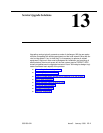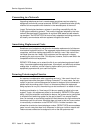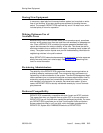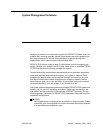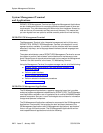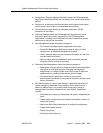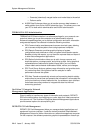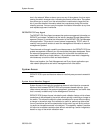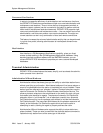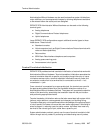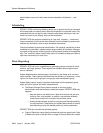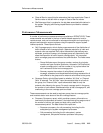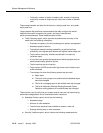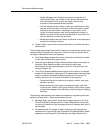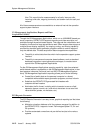
System Access
Issue 5 January 1998
14-5555-230-024
tem in the network. When an alarm occurs on any of the systems, the icon repre-
senting the switch changes color, indicating the severity of the alarm. The system
then allows you to zoom in on the various switch components to target the trou-
ble. It provides detailed information about the components during this trouble-
shooting process. You can query the system for detailed information at any time
and request equipment inventories.
DEFINITY G3 Proxy Agent
The DEFINITY G3 Proxy Agent accesses the system management information on
DEFINITY and makes it available via the industry standard Simple Network Man-
agement Protocol. It provides that information to the DEFINITY G3 Fault Manage-
ment application. The protocol is one of several supported by TCP/IP, which is
used by many product vendors to send the management information to network
management systems.
The enhanced cut-through capability provides access to the DEFINITY ECS inte-
grated management utilities so you can manipulate the system databases. Since
the network management computer allows you to view both the switches and
associated LANs from a single platform, it is possible to see what is happening
simultaneously to both the voice and data networks.
When used together, the Fault Management and Proxy Agent applications pro-
vide network perspective and switch management from one station.
System Access
DEFINITY ECS’s open architecture makes for relatively easy access to essential
data.
System Access Interface Support
System Access is the basis for transferring data and administrative commands
back and forth between DEFINITY ECS and processor-based adjuncts. It pro-
vides external access to the system management, maintenance, and traffic data
that is normally available only via the Management Terminal.
DEFINITY ECS System Access includes the end validation feature, which allows
translations to be validated by the switch without actually committing a change to
the switch. This allows the switch to check translations for errors without making
a change in the switch data. End validation is useful for performing data valida-
tion on translations that will be downloaded to the switch, as well as for perform-
ing audits on translations stored in the adjunct. This capability makes it possible
for adjuncts to validate translation data without maintaining a switch image data-
base or a copy of the switch validation rules.



